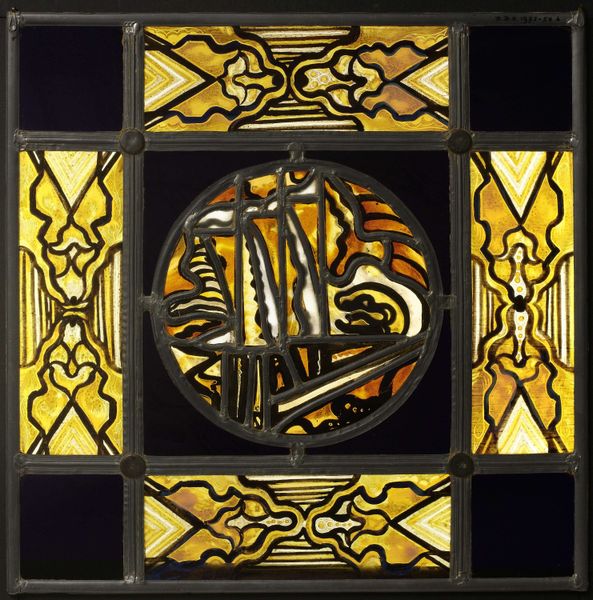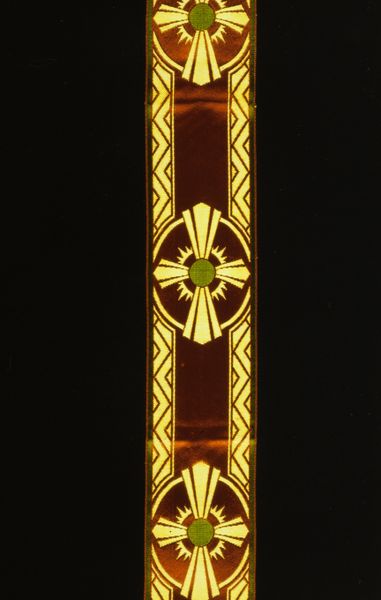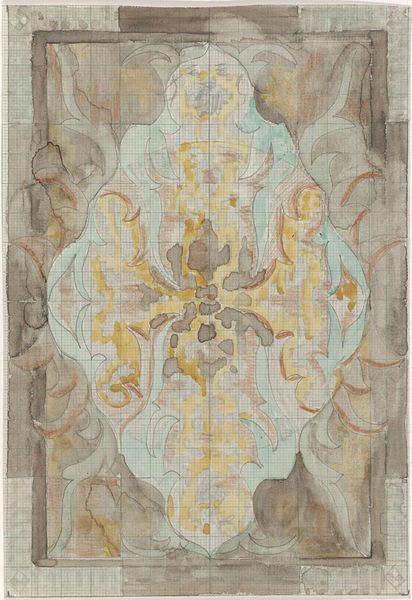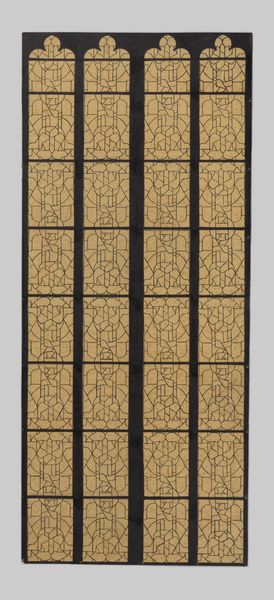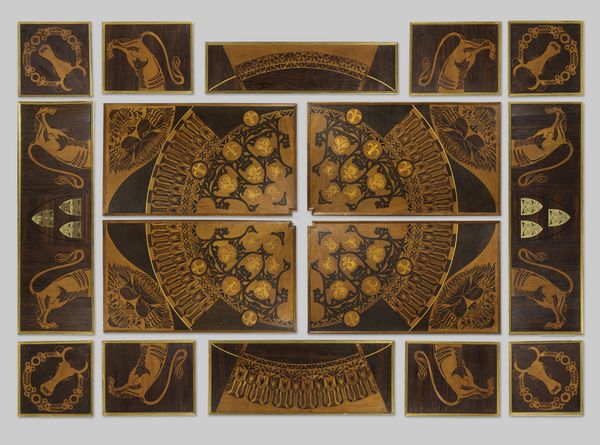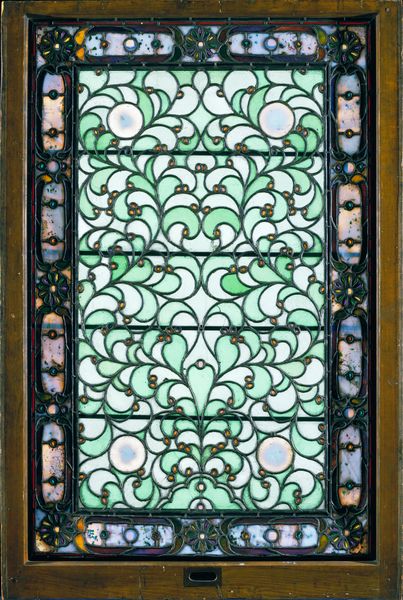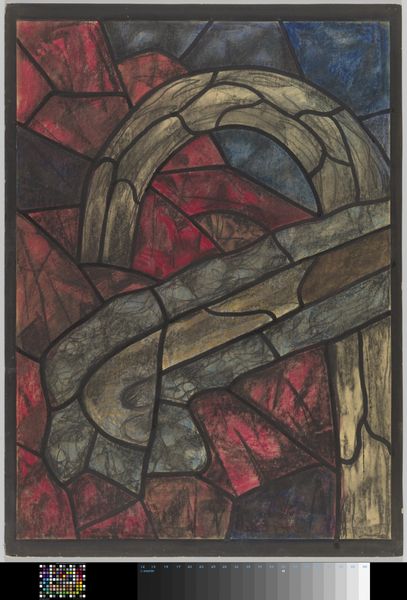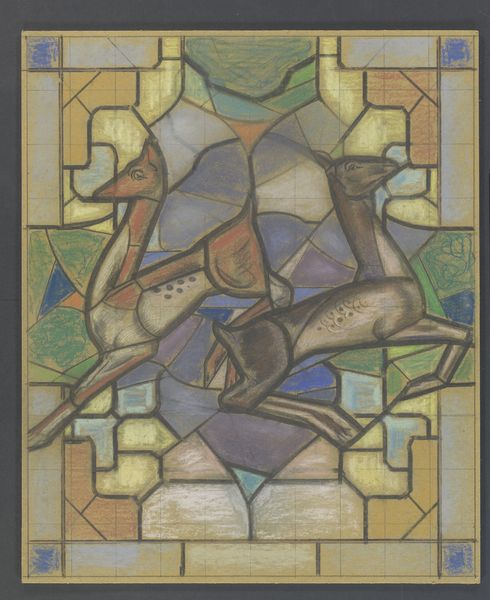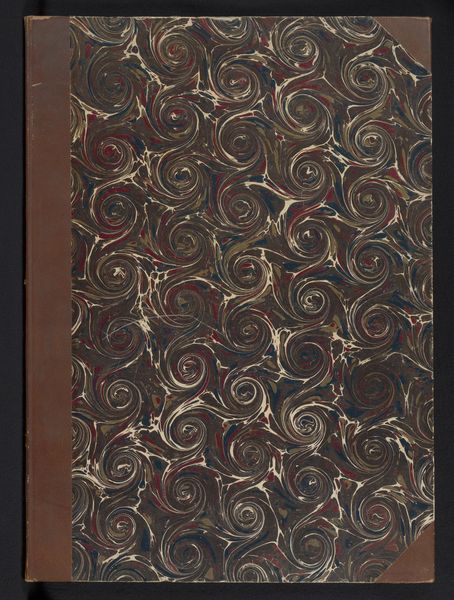
Dimensions: height 310 cm, width 66 cm
Copyright: Rijks Museum: Open Domain
Curator: Here we have Chris Lebeau's striking stained glass panel, designed in 1926. What are your first impressions? Editor: Austere. Even somber. There's a coldness to the palette despite the presence of gold. It reminds me of ironwork or some kind of...prison cell? Curator: Interesting! From a formal perspective, the linear composition, combined with the geometric and organic motifs typical of Art Nouveau, are very striking. Look at how Lebeau juxtaposes these elements within the lead framework. It really emphasizes the glass as a structured medium. Editor: I can see the balance between organic and geometric forms that you are mentioning, but, knowing that Lebeau was a committed anarchist and pacifist, I wonder how those political beliefs manifested here, in the years following the first world war. I wonder about confinement and freedom, light and dark... Curator: Well, it is titled "Ruit," which simply means "pane" or "window" in Dutch, so that directs our understanding in some respect. Let us explore the materiality: consider how Lebeau manipulated the light through the colored glass, constructing visual interest and meaning through the pattern and tonality alone. Editor: The title also gestures towards visibility, towards looking out but potentially also towards being looked *at*. This was made in the interwar period, where increasing regulation was justified through scientific management. Could it be suggesting the surveillance of the working classes through design? I understand that he created designs for the socialist magazine, "The Plough," and designed textiles... Curator: That might be so, however, consider its purely aesthetic qualities – the dynamism created by the juxtaposition of different colored glass, the interplay of lines creating structural stability within a decorative object. Editor: True, Lebeau beautifully crafted those individual geometric patterns from glass. Seeing them held together in this piece definitely raises some powerful contrasts in our experience. Curator: I concur. This brief discussion reminds us of the layered, multifaceted ways a singular piece can inform perspectives. Editor: Exactly, I hope this discussion provokes thought on how design can represent freedom, oppression, and so much more.
Comments
No comments
Be the first to comment and join the conversation on the ultimate creative platform.
